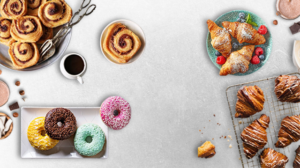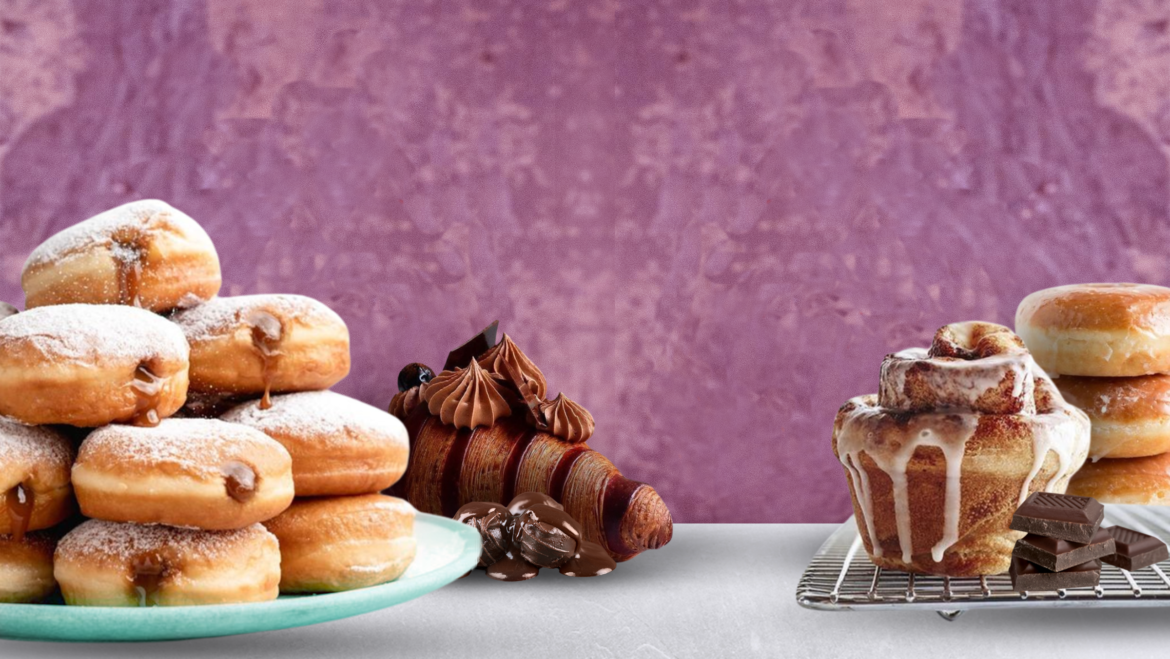Baked goods are often prepared or purchased in large quantities in various forms. As a result, leftovers may remain for the next day. Over time, these items tend to lose their flavor and fluffiness gradually due to air exposure. If not properly wrapped and sealed, the dough hardens into an unpalatable texture, making it unsuitable for consumption.
Here are some tips and guidelines to help you maintain the softness and fluffiness of baked goods for as long as possible.
Tips for Maintaining the Softness of Baked
1. Preparation and Planning: The Key to Successful Baking
Before starting to bake any dough, it’s essential to understand that success depends on meticulous preparation and planning.
-
- Begin by thoroughly reading the recipe to ensure you have all the essential ingredients ready to avoid disruptions later.
- Measure all ingredients accurately to achieve precise results.
- Don’t forget to prepare necessary tools like pots, mixers, measuring spoons, and scales.
- Preheat your oven to the specified temperature to guarantee proper baking. If the recipe requires pre-preparing the dough, knead and store it in the refrigerator or freezer as needed.
- Pay attention to small details, as they can be the cornerstone of successful baking.
2. Using the Right Ingredients Is Non-Negotiable

The precise selection of ingredients is what makes the difference in pastries. To achieve a perfect dough with stunning results:
-
- Use high-quality, natural flour as the foundation for excellent outcomes.
- Ensure other ingredients, such as butter and eggs, are fresh and of high quality, as they directly affect the texture and flavor of the dough.
- Avoid ingredients with artificial additives or preservatives. Natural and organic components enhance the taste with rich and authentic flavors.
- Always adhere to the recipe without omitting any essential ingredient. Substitutions can lead to unsatisfactory results.
- Let precision in ingredient selection be the foundation of your recipe for results that exceed expectations.
3. Mastering Oven Temperature Control
Controlling the oven temperature is one of the most crucial factors to consider during baking for perfect results.
-
- Follow the recipe’s specified temperature precisely; it’s not a minor detail but the key to success.
- Always preheat the oven to the required temperature, as this ensures even heat distribution and minimizes failure.
- Use a thermometer to monitor and adjust the oven temperature as needed.
- Avoid frequently opening the oven door during baking, as this can disrupt the temperature and compromise the dough’s consistency.
- If necessary, adjust the oven temperature during baking, as oven behavior may vary depending on the dough’s type and thickness.
In short, mastering oven temperature control is essential for producing unique and outstanding baked goods.
4. Gentle Handling of Dough: The Secret to Flexibility and Fluffiness
Proper and careful handling of dough is vital for achieving soft, fluffy pastries.
-
- When kneading, handle the dough calmly and evenly, avoiding excessive kneading or forceful handling. Overworking the dough removes the trapped air, negatively affecting its final texture.
- Use gentle, circular motions to distribute the ingredients evenly.
- To prevent overheating or losing fluffiness, work with your fingertips instead of your palms, maintaining a light and delicate touch.
- When shaping the dough, avoid excessive pressing or pulling. Shape it gently with steady movements for the best results.
- Once shaped, cover the dough well and place it in a warm, draft-free area to rise peacefully. Avoid sudden temperature changes to ensure proper fermentation.
By following these tips, you’ll be able to create delicious baked goods with perfect texture and flavor that will impress anyone who tries them.
Frequently Asked Questions
Why do baked goods dry out after baking?
Overstretching the dough can cause it to lose its softness and elasticity. For specific pastries like cookies, proper rolling is crucial, but excessive stretching in other types can damage the dough and result in dryness during baking.
How can I keep baked soft?
Store them in paper bags at room temperature, then place them inside a sealed plastic container. This method keeps baked goods fresh for up to four days.
Can I use water instead of milk in cakes?
Yes, water can replace milk to provide the necessary moisture for the dough. However, using water results in a lighter texture and a less rich flavor compared to milk.
What causes a cake to sink after being removed from the oven?
This can occur due to several reasons, such as:
-
- Oven temperature being too low.
- Insufficient mixing of the ingredients.
- Adding too much sugar or using coarse sugar.
- Failing to cream butter and sugar adequately during preparation.
Can baked be frozen?
Yes, pastries can be stored in the refrigerator for up to a week in a tightly sealed bag to prevent drying. Before eating, allow them to return to room temperature. Additionally, baked goods can be frozen for up to three months while maintaining their flavor and texture.

